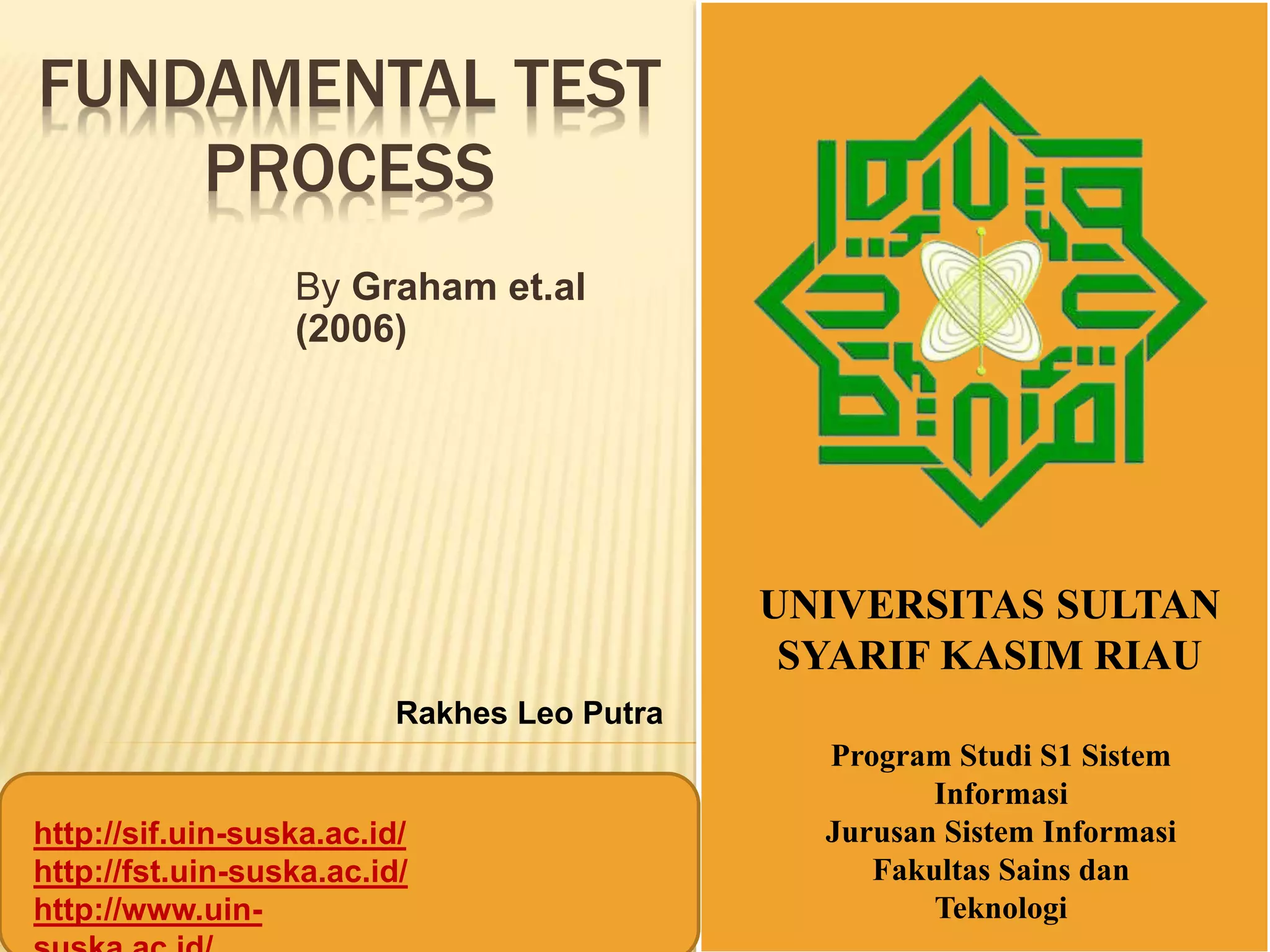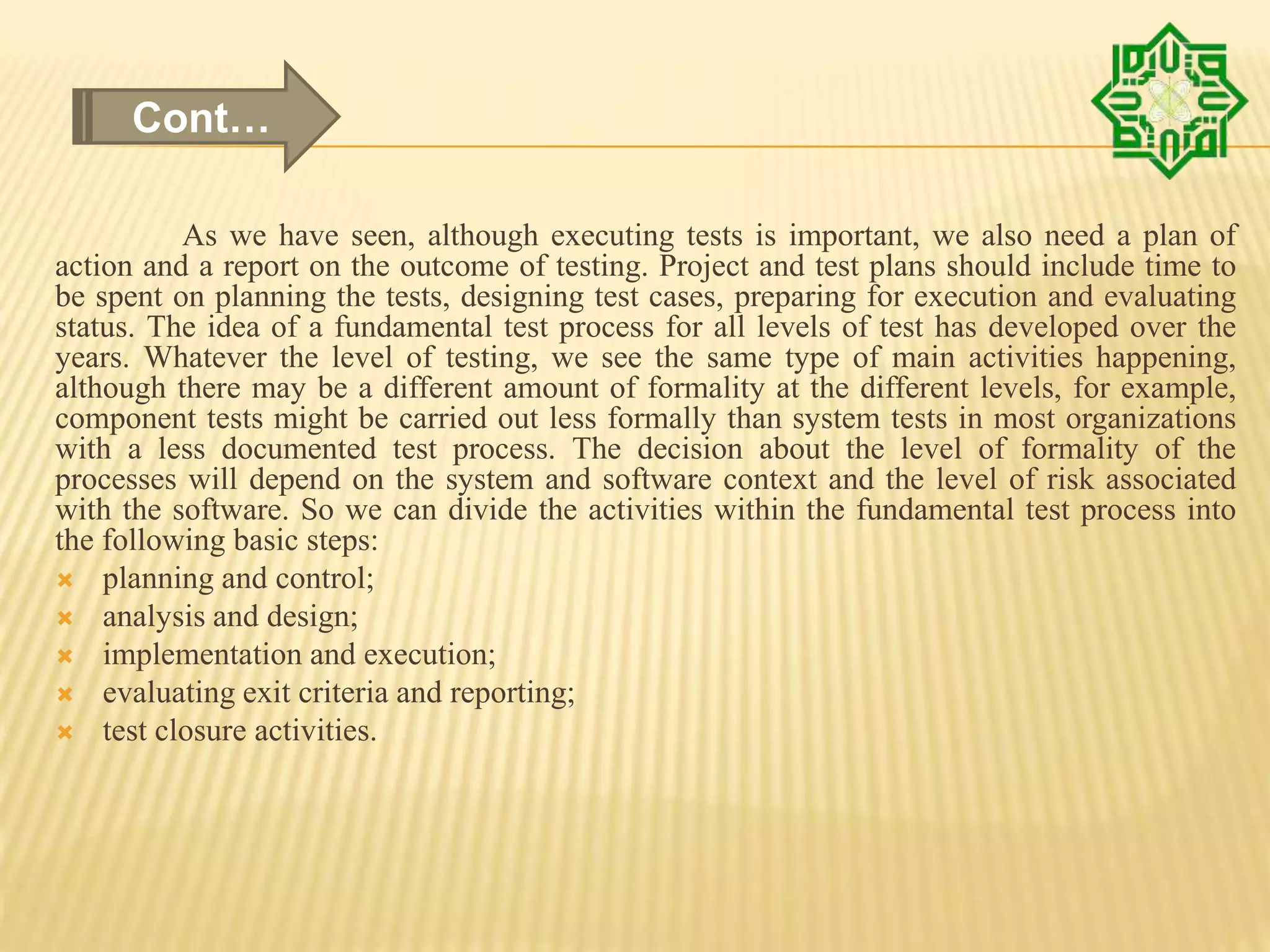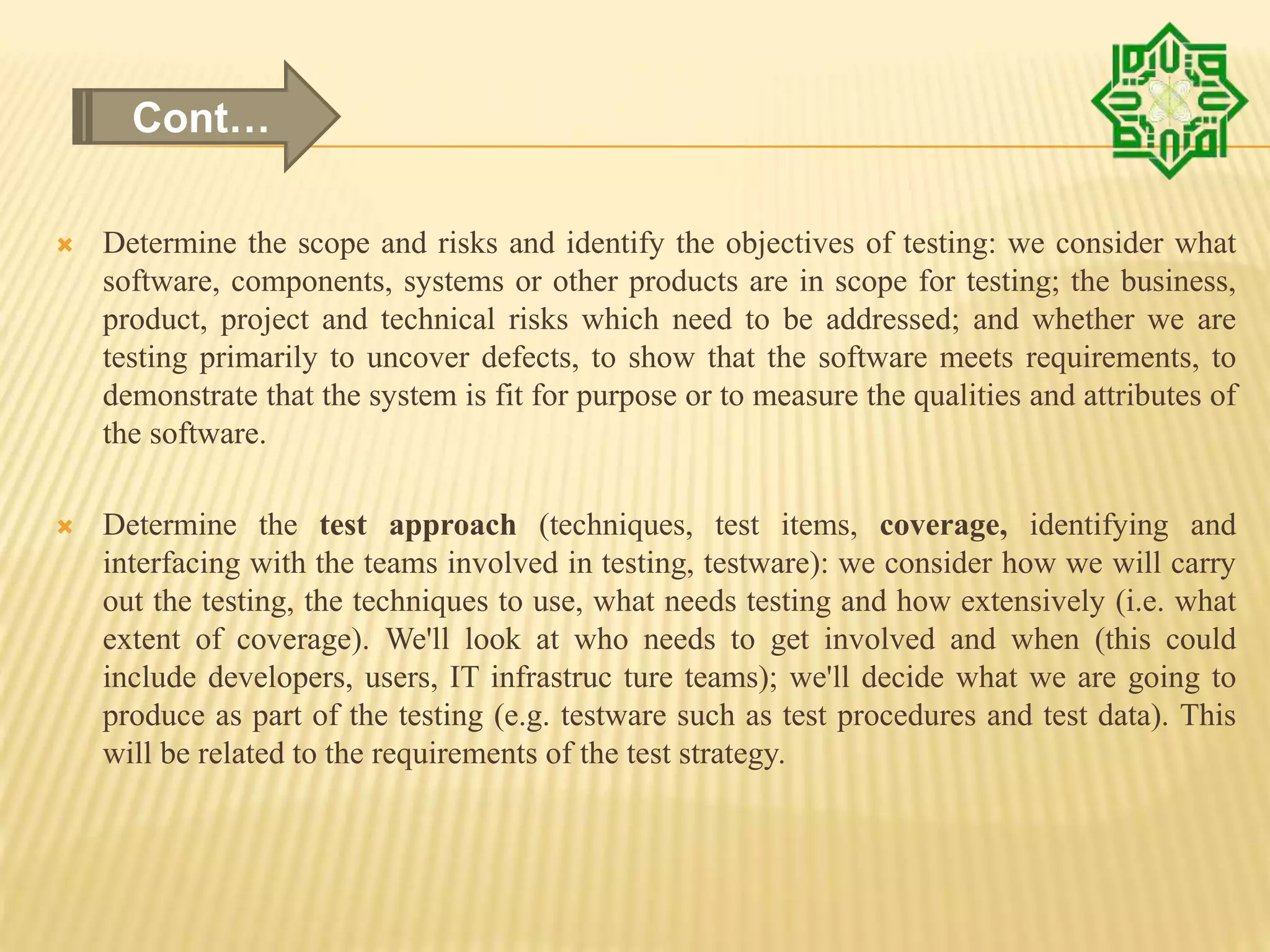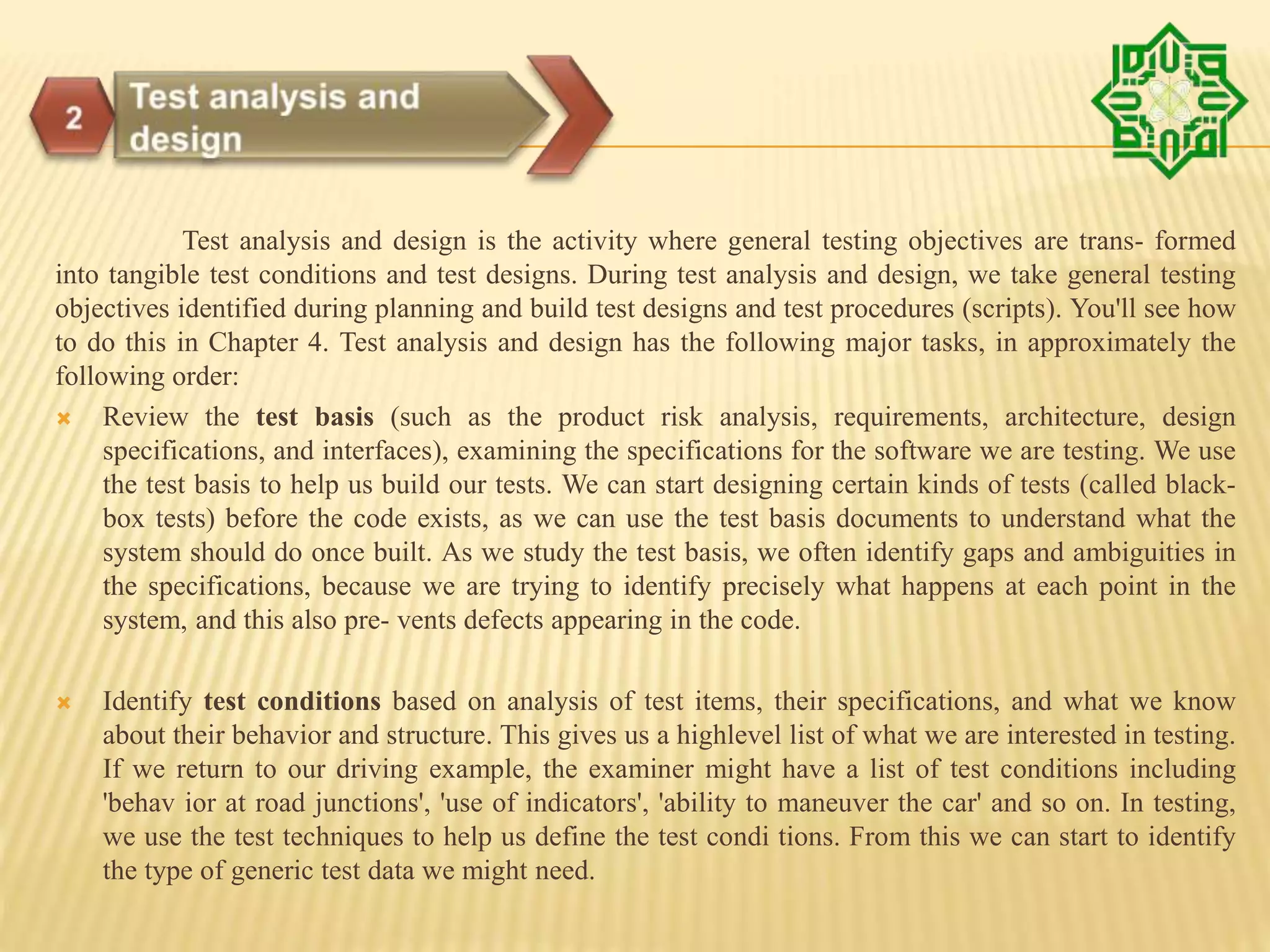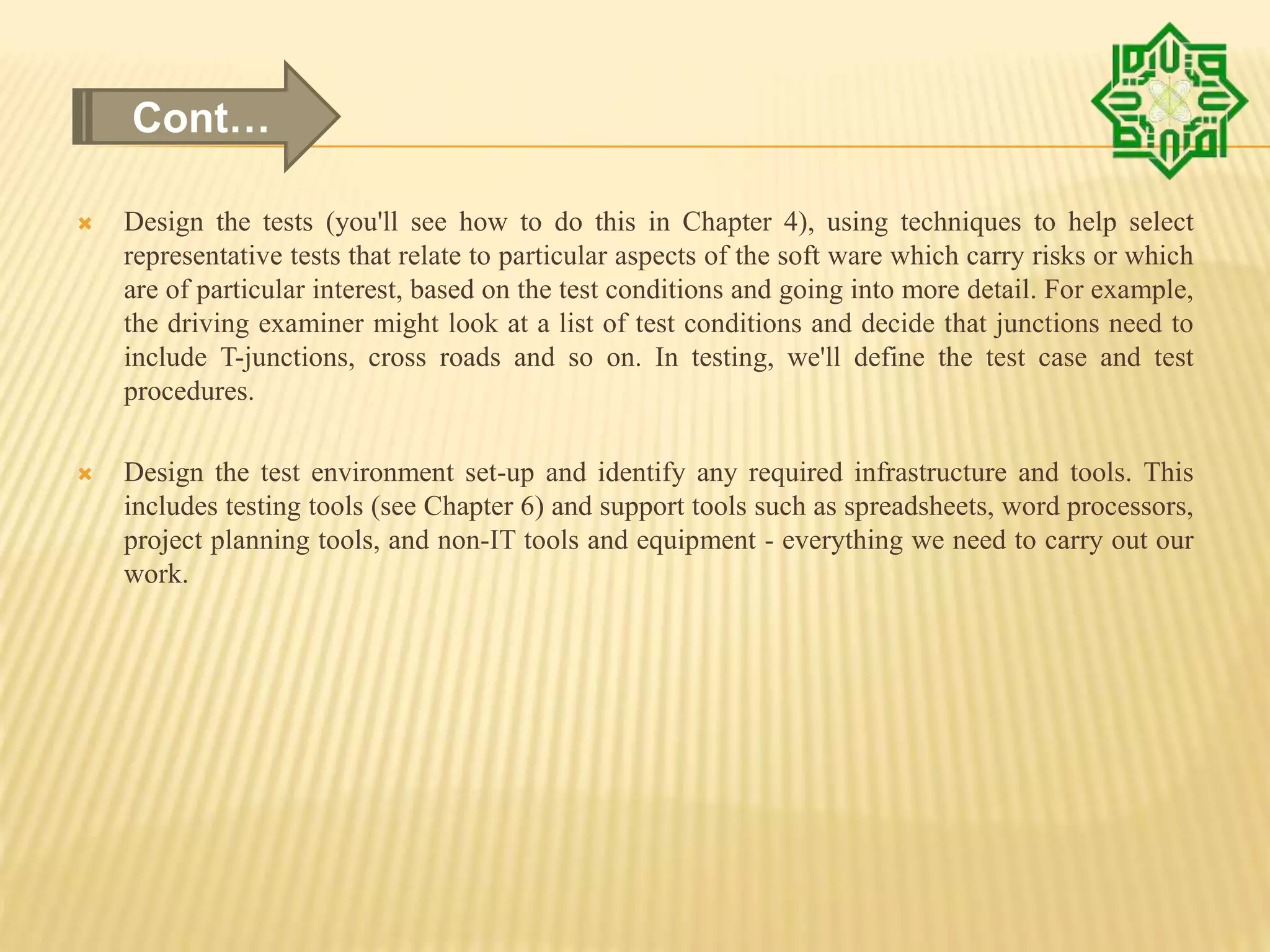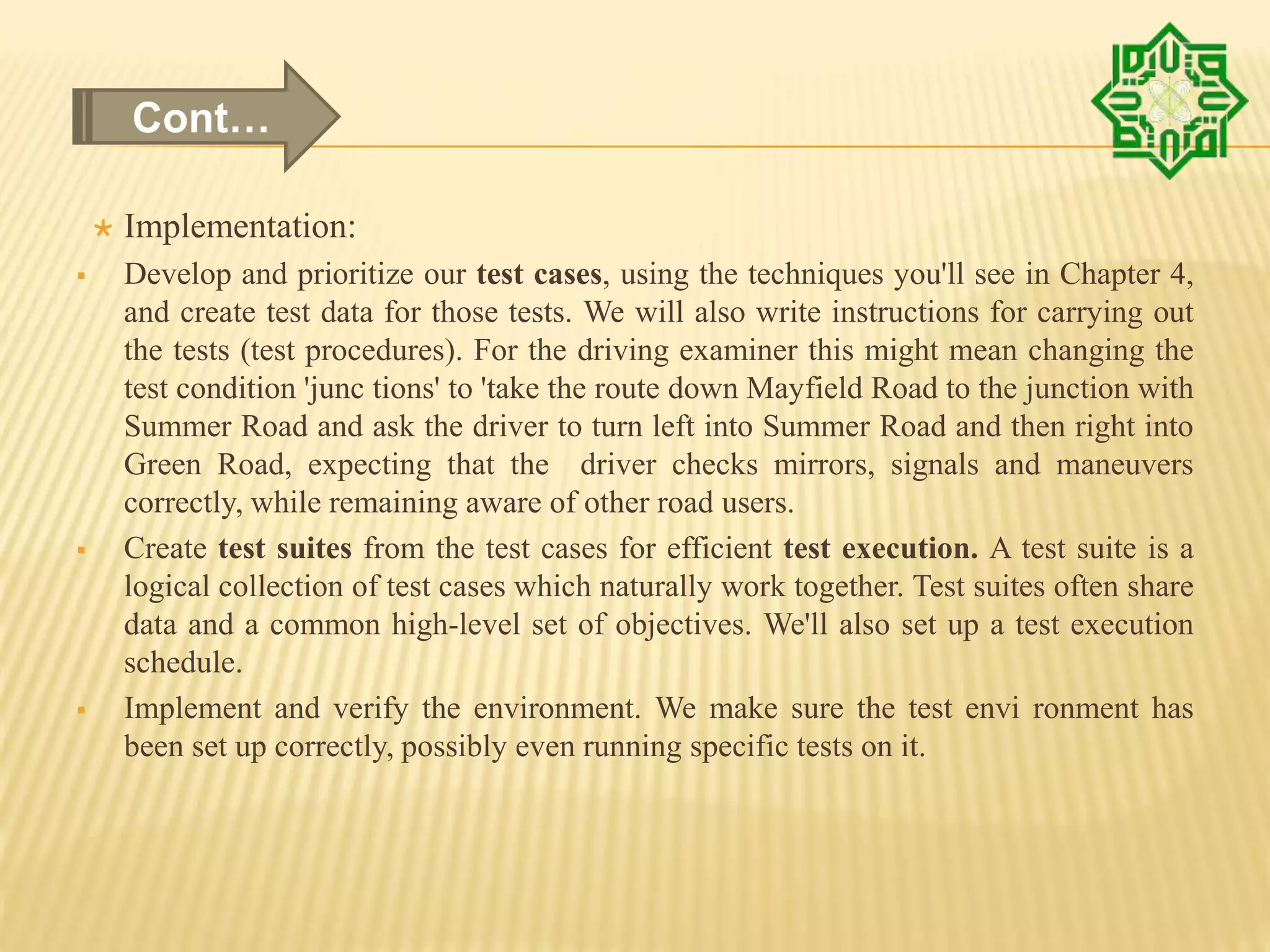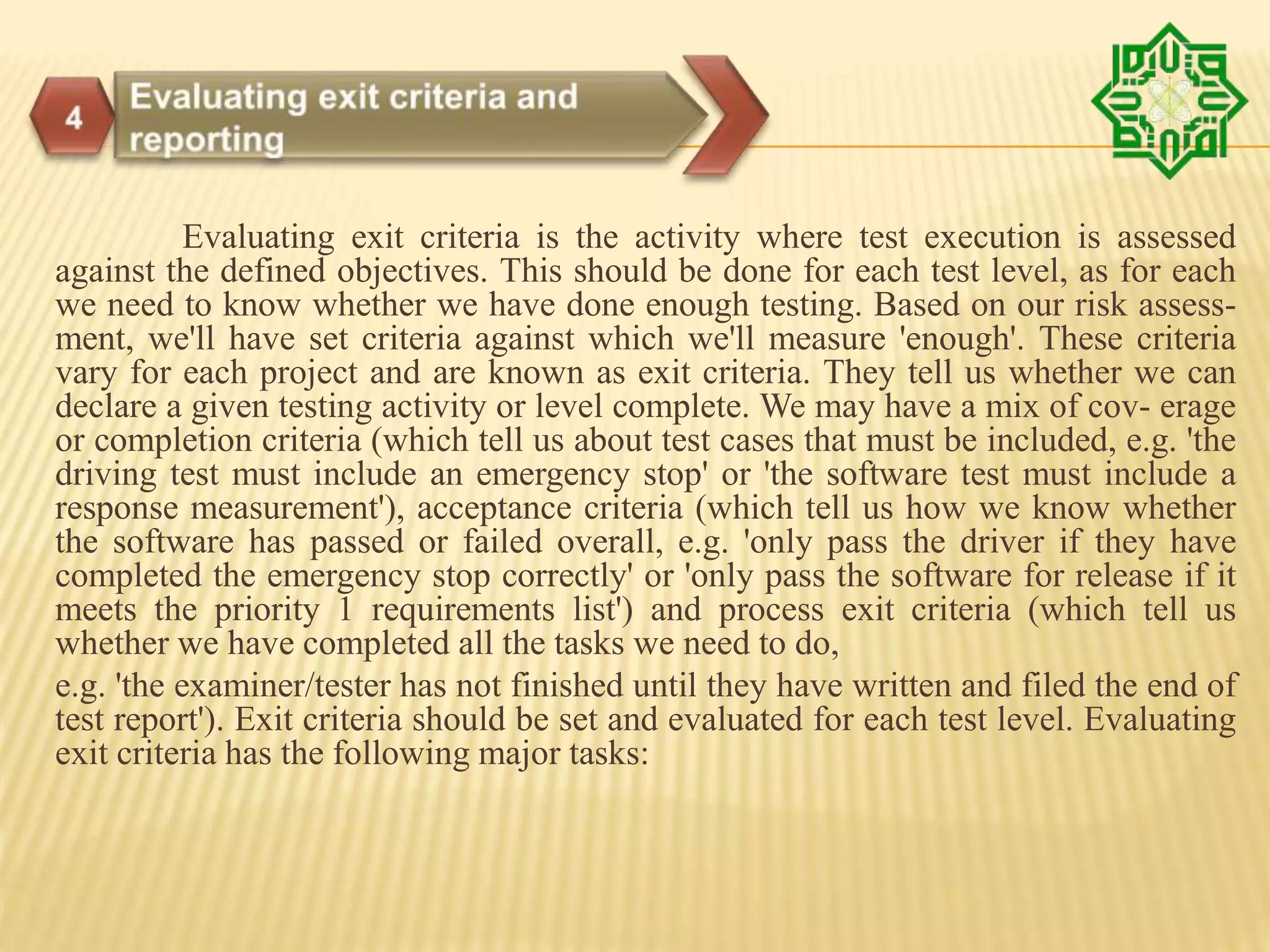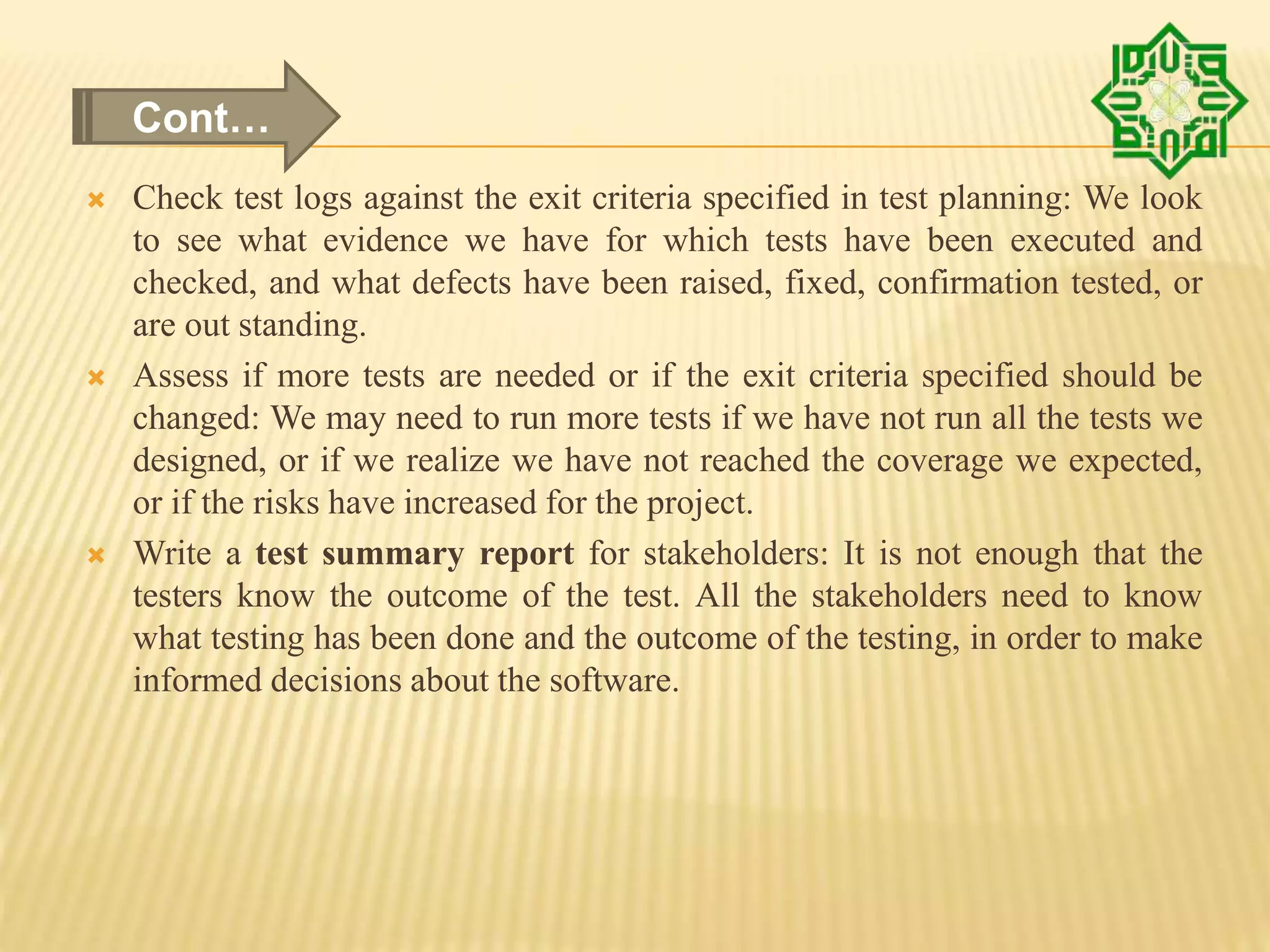This document describes the fundamental test process, which consists of test planning, analysis and design, implementation and execution, evaluating exit criteria and reporting, and test closure activities. It provides details on the typical tasks involved in each part of the test process, such as determining test scope and objectives during planning, reviewing test basis documents and identifying test conditions during analysis and design, developing and prioritizing test cases and creating test data during implementation, and checking test logs against exit criteria and writing a summary report during evaluation and reporting.
